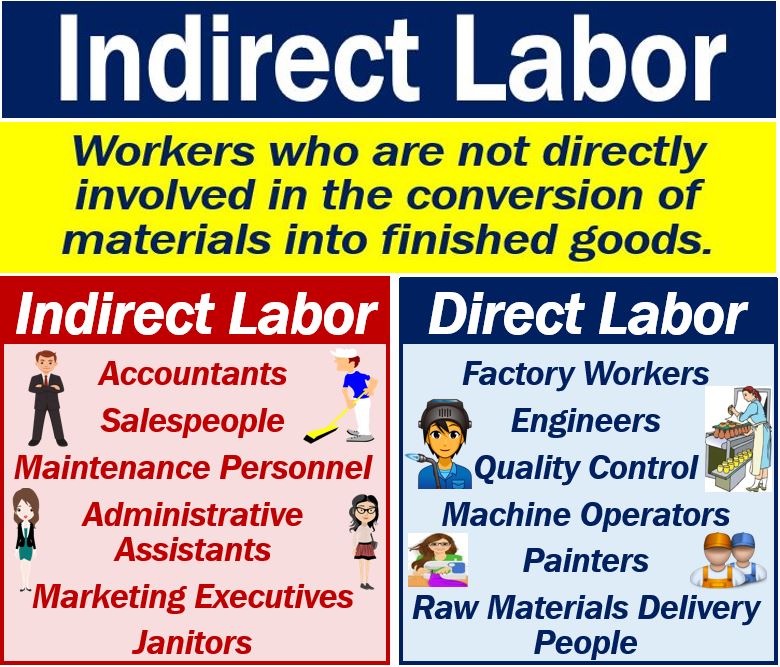What is indirect labor? Definition and examples
Indirect labor refers to employees who support the production process. However, they do not play an active part in the conversion of materials into finished goods. Security guards, janitors, and accountants, for example, are part of indirect labor.
Accountants charge the cost of this type of labor to factory overhead. Their costs are not readily identifiable with a work order or specific task. In accounting, we refer to them as ‘indirect costs.’
Put simply, when labor is ‘indirect,’ we cannot bill it to the goods that our company produces.
Accounting Tools has the following definition of the term on its website:
“Indirect labor is the cost of any labor that supports the production process, but which is not directly involved in the active conversion of materials into finished products.”
When orders decline, the management may lay off production workers, i.e., direct labor. If a company has plenty of orders, but it is still unprofitable, it may trim its indirect labor.

Direct vs. indirect labor
In a company, there are two types of labor: indirect and direct.
Direct
Direct labor consists of people who do work on specific products, i.e., they make things that the company sells.
Susan is an assembly line factory worker. She cuts metal sheets and then attaches them to something. This item eventually becomes a finished product.
Susan, therefore, forms part of the company’s direct labor.
We can directly link Susan’s work and pay to a specific product that the company is producing.
Indirect
Tom and Susan work in the same company. Tom is a janitor. He cleans the assembly area where Susan works. He spends most of his day with a bucket and a mop.
Tom’s cleaning does not make finished products. We cannot trace his work back to any goods that the company produces.
That is why we consider Tom’s work as indirect labor. He ‘indirectly’ helps the company makes things.
Regarding the type of work that Tom does, My Accounting Course says:
“Indirect labor refers to worker’s hours that are spent on working on projects that cannot be traced back to specific production units or products. In other words, indirect labor is employee work that can’t be billed to goods produced.”
Determining which is which
It is sometimes difficult to distinguish between indirect and direct labor costs. A company may incur some labor costs during the production process.
However, we should still consider some of it as indirect costs, i.e., indirect labor. We have to because it is not possible to trace some of the work back to the finished product.
John Smith, for example, may be overseeing the machines in a production process that is completely automated. In other words, there are only robots and machines on the assembly line.
Even though John has to oversee the machinery, he is not actively participating in the production process. In other words, he is not making anything that the company sells. Therefore, he forms part of the company’s indirect labor. Accountants should register his wages as indirect costs.

